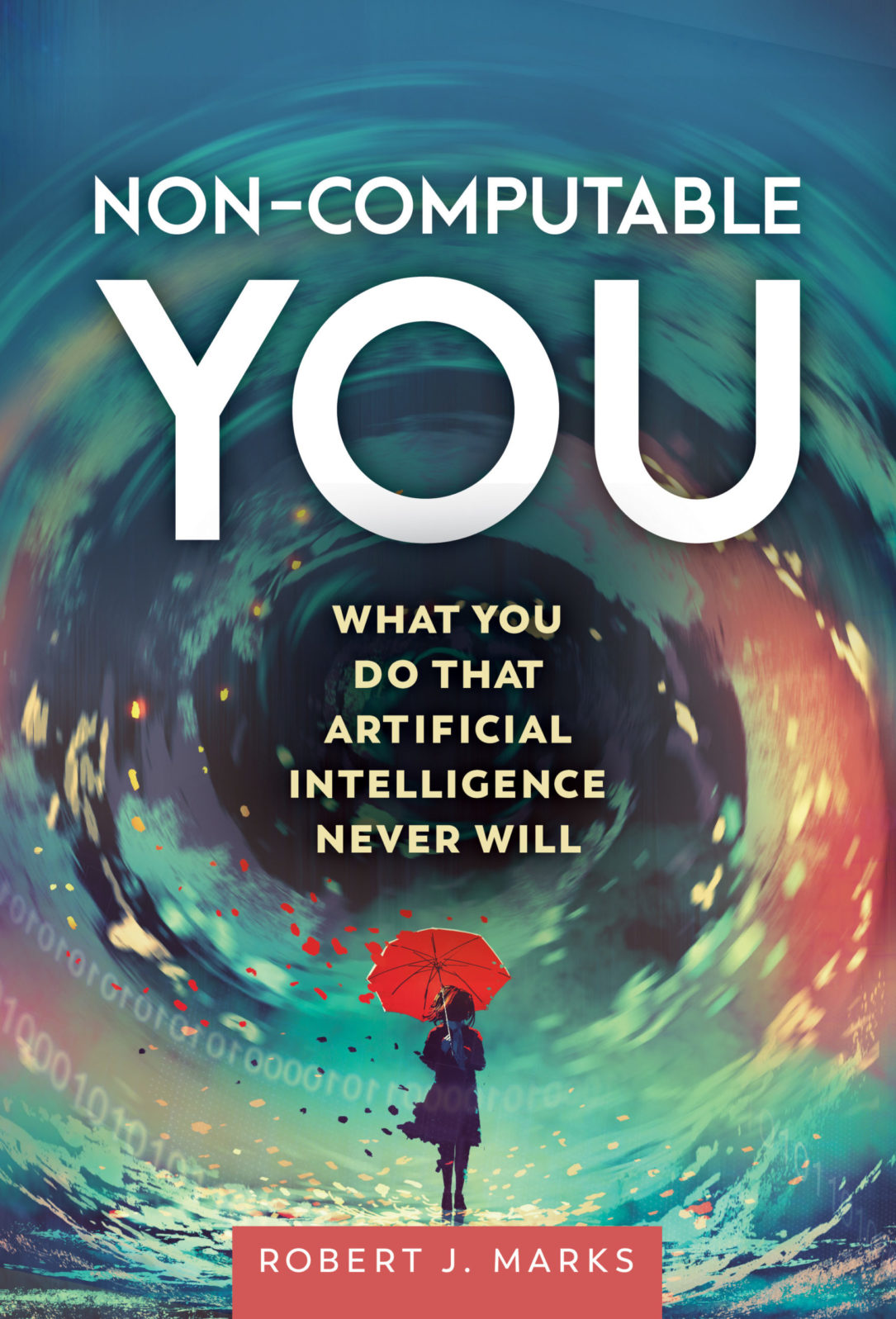
Computer engineering prof Marks notes in his new book, Non-Computable You, “The answers computer programs give sometimes surprise me too — but they always result from their programming.” He discusses his work in swarm intelligence:
The Office of Naval Research contracted Ben Thompson, of Penn State’s Applied Research Lab, and me and asked us to evolve swarm behavior. Simple swarm rules can result in unexpected swarm behavior like stacking Skittles. Given simple rules, finding the corresponding emergent behavior is easy. Just run a simulation. But the inverse design problem is a more difficult one. If you want a swarm to perform some task, what simple rules should the swarm bugs follow? To solve this problem, we applied an evolutionary computing AI. This process ended up looking at thousands of possible rules to find the set that gave the closest solution to the desired performance.
One problem we looked at involved a predator-prey swarm. All action took place in a closed square virtual room. Predators, called bullies, ran around chasing prey called dweebs. Bullies captured dweebs and killed them. We wondered what performance would be if the goal was maximizing the survival time of the dweeb swarm. The swarm’s survival time was measured up to when the last dweeb was killed.
After running the evolutionary search, we were surprised by the result: The dweebs submitted themselves to self-sacrifice in order to maximize the overall life of the swarm.
This is what we saw: A single dweeb captured the attention of all the bullies, who chased the dweeb in circles around the room. Around and around they went, adding seconds to the overall life of the swarm. During the chase, all the other dweebs huddled in the corner of the room, shaking with what appeared to be fear. Eventually, the pursuing bullies killed the sacrificial dweeb, and pandemonium broke out as the surviving dweebs scattered in fear. Eventually another sacrificial dweeb was identified, and the process repeated. The new sacrificial dweeb kept the bullies running around in circles while the remaining dweebs cowered in a corner.
The sacrificial dweeb result was unexpected, a complete surprise. There was nothing written in the evolutionary computer code explicitly calling for these sacrificial dweebs. Is this an example of AI doing something we had not programmed it to do? Did it pass the Lovelace test?
Absolutely Not
We had programmed the computer to sort through millions of strategies that would maximize the life of the dweeb swarm, and that’s what the computer did. It evaluated options and chose the best one. The result was a surprise, but does not pass the Lovelace test for creativity. The program did exactly what it was written to do. And the seemingly frightened dweebs were not, in reality, shaking with fear; humans tend to project human emotions onto non-sentient things. They were rapidly adjusting to stay as far away as possible from the closest bully. They were programmed to do this.
Robert J. Marks, “Machines with minds? The Lovelace test vs. the Turing test” at Mind Matters News (July 5, 2022)
Takehome: A machine mind didn’t “just evolve” in this experiment; it was programmed in — even if its output was a surprise. The same is likely true of the human mind.
You may also wish to read the earlier published excerpts:
Why you are not — and cannot be — computable. A computer science prof explains in a new book that computer intelligence does not hold a candle to human intelligence. In this excerpt from his forthcoming book, Non-Computable You, Robert J. Marks shows why most human experience is not even computable.
The Software of the Gaps: An excerpt from Non-Computable You. In his just-published book, Robert J. Marks takes on claims that consciousness is emerging from AI and that we can upload our brains. He reminds us of the tale of the boy who dug through a pile of manure because he was sure that … underneath all that poop, there MUST surely be a pony!
Marks: Artificial intelligence is no more creative than a pencil.
You can use a pencil — but the creativity comes from you. With AI, clever programmers can conceal that fact for a while. In this short excerpt from his new book, Non-Computable You, Robert J. Marks discusses the tricks that make you think chatbots are people.
and
Machines with minds? The Lovelace test vs. the Turing test. The answers computer programs give sometimes surprise me too — but they always result from their programming. When it comes to assessing creativity (and therefore consciousness and humanness), the Lovelace test is much better than the Turing test.